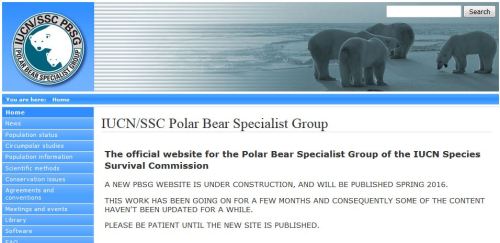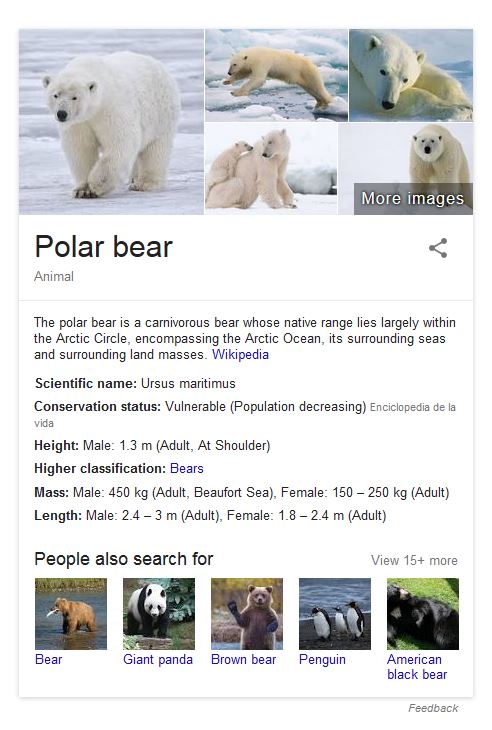Google & Govt Officials Hiding Polar Bear Population Increase
Google caught conspiring with government-funded bodies to hide the rise in polar bear population known about since November 2015.
polarbearscience.com reports:
It is now past the 15 June 2016 mark and the IUCN Polar Bear Specialist Group (PBSG) has still not acknowledged the 2015 IUCN Red List update on the status of polar bears. See the screencap below, taken this morning.

This notice has been up since 14 January 2016 and no reference or link to the November 2015 IUCN Red List update has been posted, even though PBSG members authored the report (pdf here)!
What they may not realize is that their silence just drives people who search the internet looking for up-to-date population and conservation status info on polar bears to this site. My posts on population size and conservation status have been the most popular posts since November.
It’s that kind of attention that has made this site so popular: PolarBearScience will reach 750,000 views within the next couple of weeks (see “Blog Stats” lower right) – that’s right, 3/4 million views in less than four years. More than 400,000 readers have come here since the end of July 2012 to find out what’s really going on in the world of polar bears.
It’s clear that PBSG members are not happy with the Red List decision: they were essentially forced, by the head of the Red List Standards and Petitions Committee, to do better science for their assessment than had been done by USGS biologists in support of the American ESA listing in 2008.
I’ve certainly noticed, that in public remarks that PBSG members have made to the media since November 2015, not a single one has pointed out the critical features of the Red List update – for example, that it puts the new population estimate of polar bears at 22,000-31,000 (not about “25,000”).
Nor have any PGSG members mentioned that the current trend for the population is considered UNKNOWN (not declining), that the probability of a 30% decline in the global population by 2050 is only 70%, or that the risk of extinction by 2050 is essentially zero.
[let me know if you find any such reference to these details mentioned in the media – I believe I found one article that at lease included a link to the Red List site]

Yes, the status classification of ‘Vulnerable’ for polar bears was upheld by the 2015 Red List but the details of the analysis were clearly damning to the message of impending doom that the PBSG prefers.
And by the way, the Encyclopedia of Life (EOL) – the organization that Google uses to offer searchers fast info on species they inquire about, has also not updated their files. See the screencap below taken 16 June 2016 of the helpful box that appeared when I Google’d “polar bear.”

Note the “Conservation status” line that says the population is “declining”, which I’ve pointed out to them several times since December 2015 is no longer true, even though their polar bear listing (screencap below) claims their information comes from this IUCN Red List entry.

I’m just guessing (because we’ll never know for sure) that if the Red List assessment update had changed to ‘Endangered’ – or if the predicted risks to polar bears had increased over the 2008 assessment, rather than decreased – neither of these organizations would have had any trouble updating their websites immediately.
Read more at polarbearscience.com
Trackback from your site.
